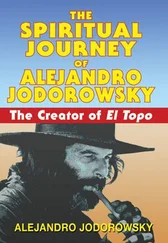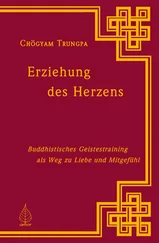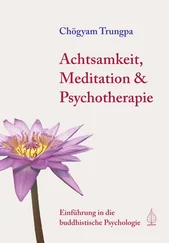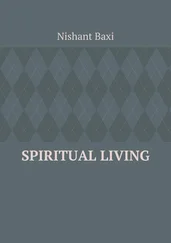Chögyam Trungpa - Cutting Through Spiritual Materialism
Здесь есть возможность читать онлайн «Chögyam Trungpa - Cutting Through Spiritual Materialism» весь текст электронной книги совершенно бесплатно (целиком полную версию без сокращений). В некоторых случаях можно слушать аудио, скачать через торрент в формате fb2 и присутствует краткое содержание. Город: Boston & London, Год выпуска: 2002, ISBN: 2002, Издательство: Shambhala Publications, Inc., Жанр: Религиоведение, Религия, на английском языке. Описание произведения, (предисловие) а так же отзывы посетителей доступны на портале библиотеки ЛибКат.
- Название:Cutting Through Spiritual Materialism
- Автор:
- Издательство:Shambhala Publications, Inc.
- Жанр:
- Год:2002
- Город:Boston & London
- ISBN:0-87773—050—4
- Рейтинг книги:5 / 5. Голосов: 1
-
Избранное:Добавить в избранное
- Отзывы:
-
Ваша оценка:
- 100
- 1
- 2
- 3
- 4
- 5
Cutting Through Spiritual Materialism: краткое содержание, описание и аннотация
Предлагаем к чтению аннотацию, описание, краткое содержание или предисловие (зависит от того, что написал сам автор книги «Cutting Through Spiritual Materialism»). Если вы не нашли необходимую информацию о книге — напишите в комментариях, мы постараемся отыскать её.
Cutting Through Spiritual Materialism — читать онлайн бесплатно полную книгу (весь текст) целиком
Ниже представлен текст книги, разбитый по страницам. Система сохранения места последней прочитанной страницы, позволяет с удобством читать онлайн бесплатно книгу «Cutting Through Spiritual Materialism», без необходимости каждый раз заново искать на чём Вы остановились. Поставьте закладку, и сможете в любой момент перейти на страницу, на которой закончили чтение.
Интервал:
Закладка:
To
Chokyi-lodrö the Marpa
Father of the Kagyü lineage
Foreword
The inspiration to find the truth, to see what is real, and to lead a genuine life—the culmination of which can be enlightenment—is what underlies every spiritual journey. However, embarking on this journey is rarely as straightforward as we may wish. The journey toward enlightenment ultimately may be both profound and simple, yet the process of understanding that simplicity tends to be multidimensional, if not downright complicated. For in order to understand a spiritual path, we must acknowledge and understand our own mind, now, as it pertains to the journey. What misunderstandings and concepts we may have about a spiritual practice, we must overcome so that we’re not merely practicing according to our own conceptualized idea. Ego, and the myriad games it plays to unravel our inspiration for enlightenment, must always be monitored.
To understand the essential qualities of the spiritual path, especially what obstacles or conundrums might lie ahead, we need a clear sense of direction. We need teachings, instructions, and guidance from someone who has traveled the path and therefore can give valid and confident advice about how others could travel this same path. This is what is offered by my father, Chögyam Trungpa, in Cutting through Spiritual Materialism .
These lectures and teachings were given in the early 1970s, at a crossroads of heightened awareness and spiritual awakening in the United States. East was beginning to meet West. Having turned away from their parents’ values, a whole generation was investigating newly available spiritual paths—many of them quite traditional. People wanted a path that would help them rise above life’s mundane trappings to see a more expansive view, a view that would dissolve their feeling of alienation and penetrate life’s very meaning. At the same time, many of these seekers were still trying to figure out what a genuine path to liberation was. There was a quality of freshness, exuberance, excitement, and youth, as well as naiveté.
People were naive about the many pitfalls possible on any path. Spiritual awakening is not a happy-go-lucky endeavor. The path of truth is profound—and so are the obstacles and possibilities for self-deception. No matter what the practice or teaching, ego loves to wait in ambush to appropriate spirituality for its own survival and gain. Chögyam Trungpa—who had just arrived in the States from Scotland—tried to clarify these issues. He wanted to raise people’s awareness to a level where they could distinguish between what is genuine spiritual progress and what is ego hijacking spirituality for its own purposes. He wanted to help them learn to recognize the grip of the Three Lords of Materialism—strategies that ego can use any time, any place, in order to seduce us from a bigger view back into its self-limiting perspective.
From an early age, Chögyam Trungpa had undergone an arduous education in the monasteries of Kham, on the high plateau of Tibet’s eastern region. Even the medieval culture of Tibet was not immune to the perils of spiritual materialism. His teachers had trained him in recognizing the wiliness of ego and in avoiding seduction into seemingly beneficial activities that are really just mundane material pursuits in sacred garments. Here was a teacher who clearly understood the materialistic dilemma of the spiritual path, one who had been steeped and trained in the ancient wisdom of the past—and who could also understand the nuances of modern-day Western-style spiritual blockage. The teachings in this book represent a milestone in the introduction of buddhadharma into American culture.
In part because of the playfulness with which my father taught his young American students, Cutting Through Spiritual Materialism has become a classic. For those in the audience who were experimenting with rejecting society in order to pursue an idealistic, transcendental path, his teachings shed new light on working with themselves in the context of their own country, family, and culture. As an enthusiastic newcomer to the West and a spiritual elder as well, he was able to introduce to them the basic workability of their own situation as part of the spiritual path. Rejecting everything was not the solution. Training one’s mind, body, and speech in accordance with the truth would bring about the understanding and wisdom that produces peace. Many of those students followed his advice, continuing on their spiritual journeys and at the same time becoming parents, teachers, business people, and even dharma teachers. These people have now become the elders for a new generation of inquisitive minds.
Even though the message of this book was addressed to a particular group at a particular time in history, it is not only for that generation. These teachings will never be dated or pigeonholed. In the last thirty years, in our continuing pursuit of whatever will distract us from the truth of pain and suffering, we have become even more materialistic. In the spiritual realm, there are now even more paths and possibilities to explore than when this book was first published—not just the classic spiritual disciplines, but also many hybrids. This book continues to have the power to sharpen our awareness of spiritual materialism. It deserves our careful attention, as its message is more applicable now than ever.
Sakyong Mipham Rinpoche October 2001CUTTING THROUGH SPIRITUAL MATERIALISM
Introduction
The following series of talks was given in Boulder, Colorado in the fall of 1970 and the spring of 1971. At that time we were just forming Karma Dzong, our meditation center in Boulder. Although most of my students were sincere in their aspiration to walk on the spiritual path, they brought to it a great deal of confusion, misunderstanding and expectation. Therefore, I found it necessary to present to my students an overview of the path and some warnings as to the dangers along that path.
It now seems that publishing these talks may be helpful to those who have become interested in spiritual disciplines. Walking the spiritual path properly is a very subtle process; it is not something to jump into naively. There are numerous sidetracks which lead to a distorted, ego-centered version of spirituality; we can deceive ourselves into thinking we are developing spiritually when instead we are strengthening our egocentricity through spiritual techniques. This fundamental distortion may be referred to as spiritual materialism.
These talks first discuss the various ways in which people involve themselves with spiritual materialism , the many forms of self-deception into which aspirants may fall. After this tour of the sidetracks along the way, we discuss the broad outlines of the true spiritual path.
The approach presented here is a classical Buddhist one—not in a formal sense, but in the sense of presenting the heart of the Buddhist approach to spirituality. Although the Buddhist way is not theistic, it does not contradict the theistic disciplines. Rather the differences between the ways are a matter of emphasis and method. The basic problems of spiritual materialism are common to all spiritual disciplines. The Buddhist approach begins with our confusion and suffering and works toward the unraveling of their origin. The theistic approach begins with the richness of God and works toward raising consciousness so as to experience God’s presence. But since the obstacles to relating with God are our confusions and negativities, the theistic approach must also deal with them. Spiritual pride, for example, is as much a problem in theistic disciplines as in Buddhism.
According to the Buddhist tradition, the spiritual path is the process of cutting through our confusion, of uncovering the awakened state of mind.
Читать дальшеИнтервал:
Закладка:
Похожие книги на «Cutting Through Spiritual Materialism»
Представляем Вашему вниманию похожие книги на «Cutting Through Spiritual Materialism» списком для выбора. Мы отобрали схожую по названию и смыслу литературу в надежде предоставить читателям больше вариантов отыскать новые, интересные, ещё непрочитанные произведения.
Обсуждение, отзывы о книге «Cutting Through Spiritual Materialism» и просто собственные мнения читателей. Оставьте ваши комментарии, напишите, что Вы думаете о произведении, его смысле или главных героях. Укажите что конкретно понравилось, а что нет, и почему Вы так считаете.











